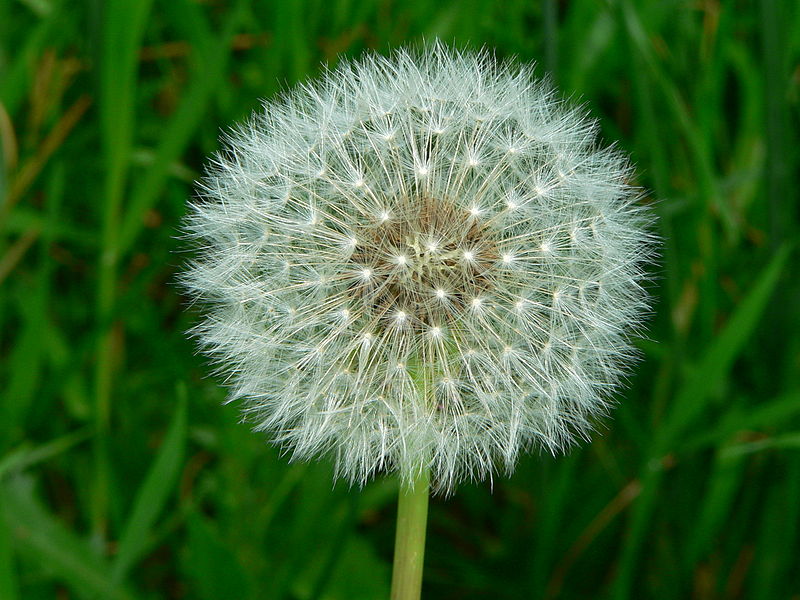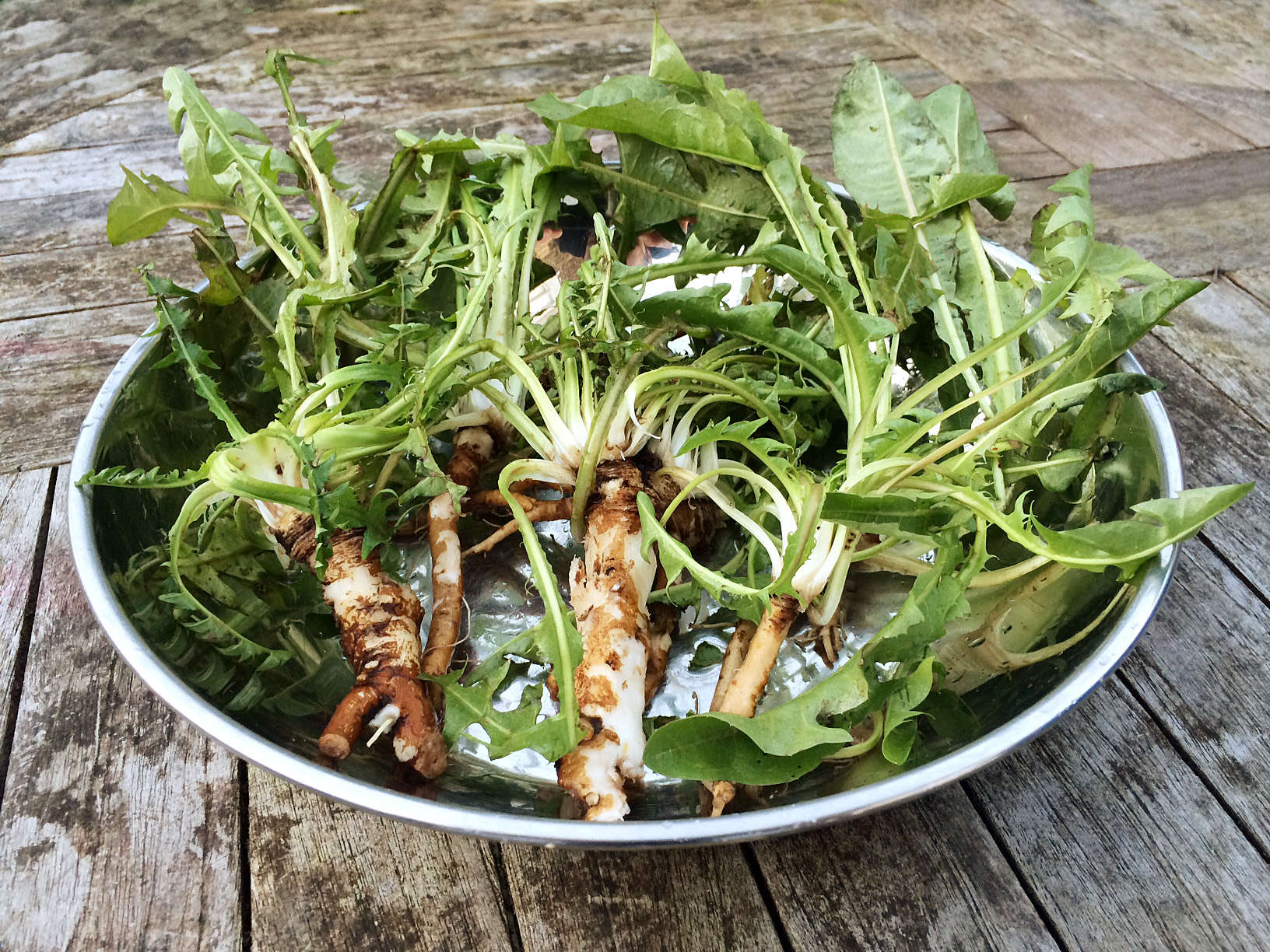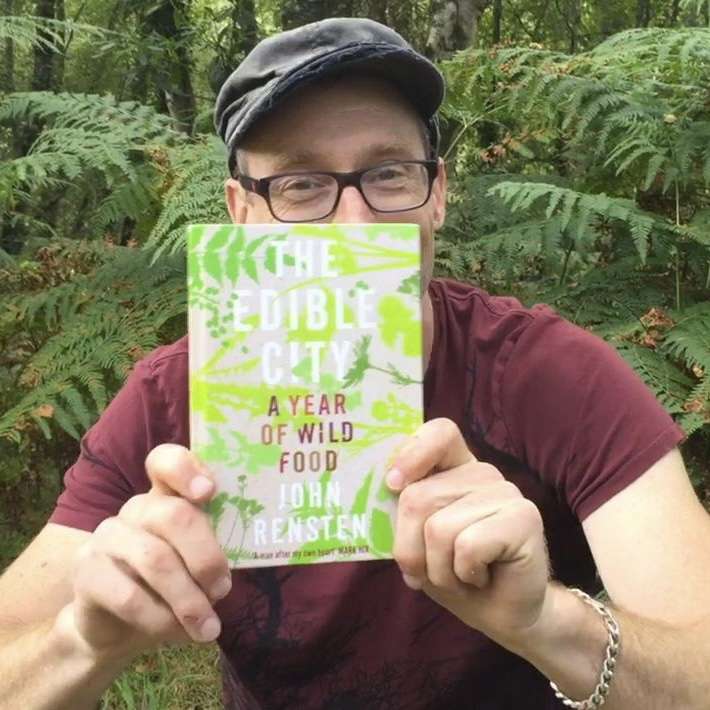 I’ve said it before but foraging is easy, it really is, and anyone who tells you otherwise is not to be trusted. My approach hinges on taking the tinniest bit of knowledge and putting it to myriad uses; simply being able to identify a Dandelion will provide numerous, all year round, foraging opportunities and produce culinary delights as diverse as a caffeine free coffee to a mid summer wine, roasted winter root vegetables to spring salads, all from just one very easy to identify, common as you like, “weed”. When I run wild food walks, this idea of taking whatever knowledge we already have, however small, and gradually adding to it with gentle repetition and multiple encounters with the same plants, is a recurrent theme, a process as far removed from academic study as I can make it. Learn just 2 or 3 new plants a month, all of which will have multiple crops and overlapping seasons, and we have access to nearly 100 edible wild foods, spread throughout the year. Small knowledge verses big reward. Simple really. If you take this approach I guarantee you will simultaneously learn HOW to forage, how to become aware of the seasons, the micro seasons within them and to look at the landscape more as a network of periphery, borders and edges, not just blocks of adjoining land, but as overlapping environments that offer increased diversity, fertility and opportunity. Once we can ID just a small selection of plants, we become familiar with them, their habitats and the visual and physical changes they undergo throughout the year, reaching a point where the botany is almost irrelevant and what remains is a form of recognition akin to spotting a good friend a hundred feet away in a crowd of people. Like I say, foraging is easy, once you know how.
I’ve said it before but foraging is easy, it really is, and anyone who tells you otherwise is not to be trusted. My approach hinges on taking the tinniest bit of knowledge and putting it to myriad uses; simply being able to identify a Dandelion will provide numerous, all year round, foraging opportunities and produce culinary delights as diverse as a caffeine free coffee to a mid summer wine, roasted winter root vegetables to spring salads, all from just one very easy to identify, common as you like, “weed”. When I run wild food walks, this idea of taking whatever knowledge we already have, however small, and gradually adding to it with gentle repetition and multiple encounters with the same plants, is a recurrent theme, a process as far removed from academic study as I can make it. Learn just 2 or 3 new plants a month, all of which will have multiple crops and overlapping seasons, and we have access to nearly 100 edible wild foods, spread throughout the year. Small knowledge verses big reward. Simple really. If you take this approach I guarantee you will simultaneously learn HOW to forage, how to become aware of the seasons, the micro seasons within them and to look at the landscape more as a network of periphery, borders and edges, not just blocks of adjoining land, but as overlapping environments that offer increased diversity, fertility and opportunity. Once we can ID just a small selection of plants, we become familiar with them, their habitats and the visual and physical changes they undergo throughout the year, reaching a point where the botany is almost irrelevant and what remains is a form of recognition akin to spotting a good friend a hundred feet away in a crowd of people. Like I say, foraging is easy, once you know how.
 So, let’s put the idea of maximising a modicum of information, to the test, and look at just one plant, The Dandelion (Taraxacum officinale) and see what uses there are for this ridiculously common flower.
So, let’s put the idea of maximising a modicum of information, to the test, and look at just one plant, The Dandelion (Taraxacum officinale) and see what uses there are for this ridiculously common flower.
Some of my first experiences with Dandelion were not pleasant and through this and similar events I leant a huge & valuable lesson…..
NATURE IS NO SUPERMARKET.
Everything is not in season at the exact time you want to use it and very often, deciding that a plant doesn’t taste good is a big mistake based on getting the timing wrong. For four years I tried to steam and eat the unopened flower heads of Hogweed, each time finding them really not to my taste, until I got the timing just right and realised what a terrific wild veg this is and that it had been me at fault, not the plant. Seasons are far too generic when dealing with ever shifting subtitles in flavour and texture. Timing is King, it really is, and sometimes being out by just a few days is enough to lead us to believe a plant is not for us and never will be. The Dandelion is a wonderful wild weed and has a huge history as an edible and medicinal plant, as such it has collected numerous common names; Priest’s Crown, Schoolboy’s Clock, Bum Pipe (yes really), Burning Fire, The Devil’s Milk Plant, Doon Head, The Lion’s Teeth and Piss The Bed…I could list another 50. Harvest the leaves in Spring, the roots in Winter or Autumn, the leaf bases (that’s the first inch or so of growth attached to the top of the root) pretty much any time of year so long as it’s very pale having been blanched by the grass around it, and the flowers are best picked, well, when they’re out. Here are some of it’s culinary uses, below that some nutritional information and finally some links to even more dandelion related recipes and ideas. Who would have thought that being able to recognise just this one obvious little plant, would lead to so many possibilities.
SOME RECIPE IDEAS.
(for more in depth info I suggest you do your own research starting with the links below).
Dandelion Horta. A classic greek dish with mixed leaves, olive oil and lemon
Dandelion root in a Japanese style marinade of soy, mirin, sesame and ginger
Dandelion leaf beer
Dandelion and Burdock root beer
Dandelion flower wine
Dandelion root coffee….has a great taste and is caffeine free
Dandelion “Ohitashi Goma-ai” stems and leaves roasted with sesame and soy
Dandelion Spring leaves as a salad, a bit bitter for my taste
Dandelion leaves sweated and served with parmesan and olive oil
Dandelion root either roasted or boiled
Dandelion basel rosette steamed; the first inch or so of growth is often pale and has little to no bitterness if blanched by the grass growing around it
Dandelion flower jam, jelly or marmalade
Dandelion and numerous other bitter Spring leaves combine to make the traditional Easter Ledge Pudding
(see last months blog for a great recipe from Mark at Galloway Wild Foods)
Dandelion tea….is not very nice.
Dandelion flower buds added to pasta dishes, a bit too bitter for me though
Dandelion leaf and pumpkin seed pesto, and obviously other versions too
Dandelion blossom syrup
Dandelion flower vinegar
AND HERE ARE A FEW OF ITS NUTRITIONAL USES.
The leaves contain good levels of coumarins, which help thin the blood, hence the traditional use in Spring time (using the new leaves). Thinning the blood allows microscopic deposits to be freed up, moved on and eliminated. The roots have anti-inflammatory properties and its polyphenols have a good antioxidant presence. They also contain notable amounts of polysaccharides, which have been shown to have anti-tumour activity in animals. Both the root and leaf contain potassium to support the heart; but also other vitamins and minerals including calcium and beta-carotene, B vitamins and vitamin C. Dandelions help remove waste products from the body, the leaf does this via the kidneys and the root works via the liver and gallbladder to support enzyme activity required for healthy phase 2 liver detoxification. Other health benefits include…
Good for blood cleansing.
Stimulates bile production (bile is used to break down fats) and good bile flow supports good bowel movements.
The bitter tasting leaves make it great for digestion – naturally stimulating digestive activity.
Also an excellent skin clearer – assisting with acne and eczema.
Leaves are great for the kidney and bladder health (general urinary issues). Women can drink a tea made from the dry leaves if they suffer from cystitis.
Encourages a good flow of urine (root and leaves).
The safest diuretic in the plant kingdom.
Alkalising and soothing for the whole body.
Lead image gratefully borrowed from Greg Hume via Wikipedia


Amazing I knew Dandelions were versatile but all the different uses you mentioned all I can say is wow going to be trying these
my favourite plant has got to be wild garlic
Amazing I knew Dandelions were versatile but all the different uses you mentioned all I can say is wow going to be trying these
my favourite plant has got to be wild garlic
Dandelion is a real treasure! It’s a real nutrient bomb 🙂 Next week I will try to make syrop from the flowers. I’m really curious how it will be!
Dandelion is a real treasure! It’s a real nutrient bomb 🙂 Next week I will try to make syrop from the flowers. I’m really curious how it will be!